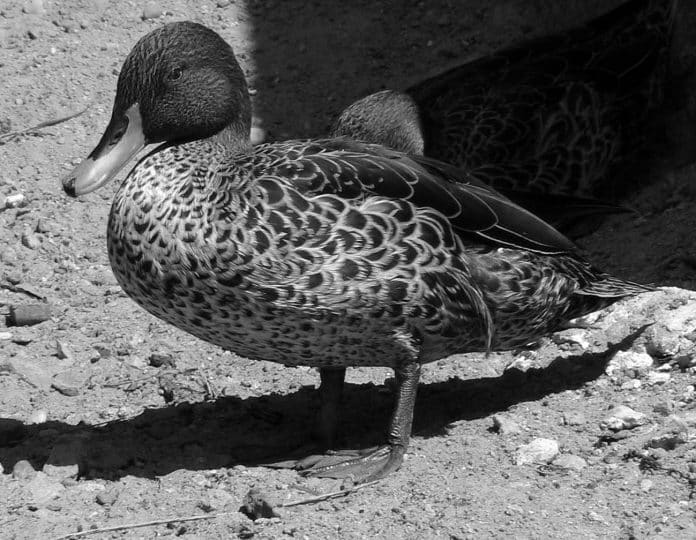Discover the Beauty of the Yellow-Billed Duck in Tanzania: A Wildlife Enthusiast’s Guide
Tanzania is one of the most popular wildlife destinations in Africa, known for its diverse range of flora and fauna. One of the most fascinating bird species found in Tanzania is the Yellow-Billed Duck. With its striking appearance and unique behavior, this bird is a favorite among birdwatchers and wildlife enthusiasts. In this guide, we will explore the beauty of the Yellow Billed Duck in Tanzania, its habitat, behavior, and conservation status. We will also provide tips for observing and photographing this stunning bird, as well as other bird species to look out for in Tanzania.
Introduction to the Yellow-Billed Duck
The Yellow-Billed Duck (Anas undulata) is a medium-sized dabbling duck that is found in sub-Saharan Africa. The male and female of the species look similar, with both having a yellow bill, dark brown eyes, and a brownish-gray body. However, the male has a slightly darker head and neck, while the female has a mottled breast. The Yellow-Billed Duck is a non-migratory bird, and it is found in a variety of wetland habitats, including lakes, rivers, swamps, and estuaries.
Habitat and Distribution of the Yellow-Billed Duck in Tanzania
In Tanzania, the Yellow-Billed Duck is found in a variety of wetland habitats, including the Serengeti, Lake Victoria, and the Selous Game Reserve. The bird prefers to live in areas that have shallow water, abundant vegetation, and plenty of food sources, such as insects, aquatic plants, and small fish. The Yellow-Billed Duck is also found in other parts of sub-Saharan Africa, including Botswana, Namibia, and South Africa.
Physical Characteristics and Behavior of the Yellow-Billed Duck
The Yellow-Billed Duck is a sociable bird that forms large flocks during the non-breeding season. It is also a dabbling duck, which means that it feeds by tipping its head underwater and grazing on aquatic plants and small invertebrates. The Yellow-Billed Duck is also known for its unique courtship display, which involves the male duck bobbing its head up and down while making a low-pitched call. The female duck will respond by bobbing her head in a similar manner.
Conservation Status and Threats to the Yellow-Billed Duck
The Yellow-Billed Duck is classified as a species of least concern by the International Union for Conservation of Nature (IUCN). However, the bird is still threatened by habitat loss, pollution, and hunting. Wetland habitats are being destroyed at an alarming rate in many parts of Africa, and this is having a negative impact on the Yellow-Billed Duck’s population. Pollution from agricultural runoff and other sources is also a threat, as it can affect the bird’s food sources and lead to health problems.
Best Places to Spot the Yellow-Billed Duck in Tanzania

If you’re interested in spotting the Yellow-Billed Duck in Tanzania, there are several places where you are likely to find them. The Serengeti National Park is a great place to start, as it is home to a variety of wetland habitats and a diverse range of bird species. Lake Victoria is another excellent location, as it is the largest lake in Africa and has a thriving bird population. The Selous Game Reserve is also worth a visit, as it is one of the largest protected areas in Africa and is home to a variety of wildlife, including the Yellow-Billed Duck.
Tips for Observing and Photographing the Yellow-Billed Duck
Observing and photographing the Yellow-Billed Duck can be a rewarding experience, but it requires patience and skill. If you want to get a good view of the bird, you should look for areas where there is plenty of vegetation and shallow water. You should also avoid making sudden movements or loud noises, as this can startle the bird and cause it to fly away. When taking photographs, it’s important to use a telephoto lens and to be mindful of the lighting conditions.
Other Bird Species to Look out for in Tanzania
In addition to the Yellow-Billed Duck, Tanzania is home to a wide variety of bird species. Some of the most popular birds to look out for include the African Fish Eagle, the Lilac-Breasted Roller, the Grey-Crowned Crane, and the Shoebill. Tanzania is also home to several endemic bird species, including the Usambara Weaver and the Pemba Sunbird.
Wildlife Conservation Efforts in Tanzania
Tanzania has made significant progress in recent years in terms of wildlife conservation. The country has established several protected areas, including national parks, game reserves, and wildlife management areas. These areas are home to a diverse range of wildlife, including many endangered species. Tanzania has also implemented policies to reduce poaching and illegal hunting, which has helped to protect many of the country’s most iconic wildlife species.
Responsible Tourism and Birdwatching in Tanzania
Responsible tourism is essential for protecting Tanzania’s wildlife and natural habitats. If you’re planning a birdwatching trip to Tanzania, it’s important to choose a tour operator that is committed to sustainable and responsible tourism practices. This includes supporting local communities, minimizing environmental impact, and respecting wildlife. By choosing a responsible tour operator, you can help to ensure that your trip has a positive impact on the environment and the local communities.
Conclusion: Appreciating the Beauty and Importance of the Yellow-Billed Duck in Tanzania
The Yellow-Billed Duck is a beautiful and fascinating bird that is an important part of Tanzania’s rich natural heritage. By learning more about this bird and its habitat, behavior, and conservation status, we can gain a deeper appreciation for the importance of protecting Tanzania’s wetland habitats and wildlife. Whether you’re a seasoned birdwatcher or simply a nature lover, a visit to Tanzania is sure to be a memorable and rewarding experience.
For more articles related to Wildlife in Tanzania (Animals), click here!

































